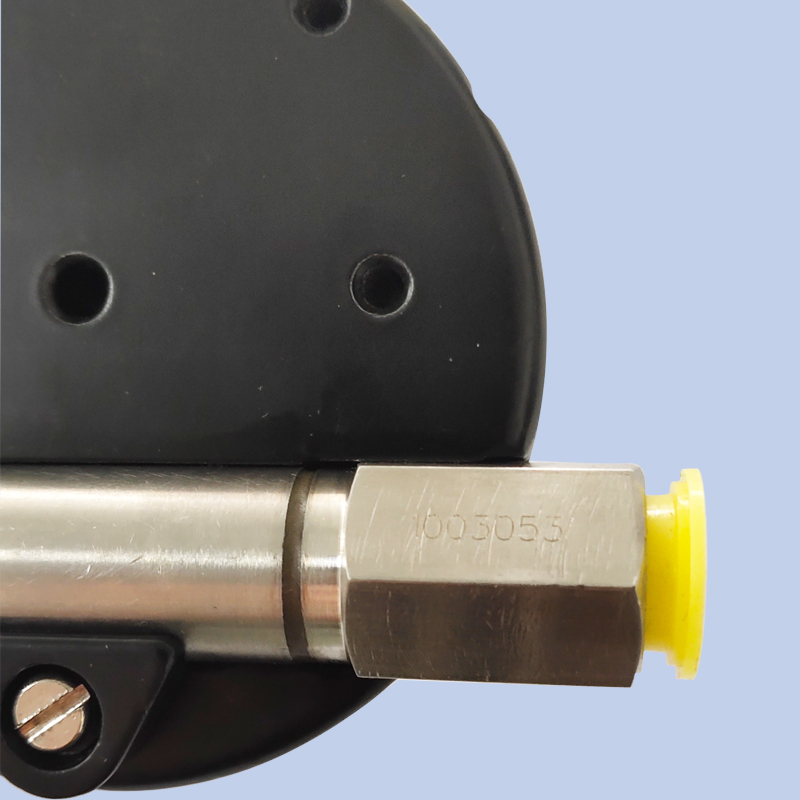
Sep . 14, 2024 17:13 Back to list
famous differential pressure gauge bourdon tube
Understanding the Bourdon Tube A Classic Differential Pressure Gauge
The Bourdon tube is a significant innovator in the realm of pressure measurement, particularly for differential pressure applications. Invented in 1849 by the French engineer Eugène Bourdon, this mechanical device has become a staple in industrial and scientific settings, offering reliable and accurate pressure readings. This article delves into the functioning and applications of the Bourdon tube, emphasizing its critical role in differential pressure measurement.
At its core, a Bourdon tube is a curved, hollow metallic tube, typically made from brass, stainless steel, or bronze. The unique design allows the tube to deform when subjected to internal pressure—a fundamental principle leveraged for measuring differential pressure. When pressure is applied, the tube straightens slightly, which initiates a movement of an attached pointer across a calibrated dial, providing a visual representation of the pressure reading.
Differential pressure gauges using Bourdon tubes are particularly valuable in various industries, including oil and gas, chemical processing, and HVAC systems. These devices can measure the difference in pressure between two points, which is crucial for monitoring flow rates, detecting leaks, and optimizing system performance. For instance, in filtration systems, maintaining the right differential pressure indicates when filters need replacement, thereby preventing potential system failures and maintaining operational efficiency.
famous differential pressure gauge bourdon tube

One of the standout features of the Bourdon tube is its ability to withstand high pressures, making it suitable for harsh environments. It can effectively measure pressures from a few inches of water column to several thousand psi, depending on the design and material used. Furthermore, while electronic pressure gauges are becoming more prevalent, Bourdon tube gauges offer several advantages, such as simplicity, durability, and resistance to extreme conditions. They are less susceptible to electrical interference, making them ideal for environments with electromagnetic interference.
The construction of a Bourdon tube gauge also contributes to its effectiveness. The design can be tailored to suit specific applications the diameter of the tube, the shape (like C-shaped or helical), and the material can all be adjusted based on the expected pressure range and environmental conditions. Such customization ensures that the device will provide accurate measurements over time, maintaining reliability and performance.
Maintenance of Bourdon tube differential pressure gauges is relatively straightforward. Regular inspections and calibrations are essential to ensure the accuracy of readings. Users should periodically check for any signs of wear, corrosion, or blockage, especially in applications where fluids may contain particulates or corrosive materials. By keeping the device in good condition, users can ensure longevity and sustained performance.
In conclusion, the Bourdon tube remains a fundamental tool in differential pressure measurement. Its innovative design combines simplicity and mechanical reliability, offering accurate readings that are critical across a range of applications. As industries continue to evolve and demand more efficient and reliable pressure measurement techniques, the Bourdon tube's legacy endures, proving itself an integral component in modern engineering and industrial practices. Whether in traditional settings or new technological applications, the Bourdon tube continues to be a trustworthy gauge that meets the essential needs of pressure measurement.
-
High-Precision 5 Valve Manifold Differential Pressure Gauge Suppliers
NewsApr.29,2025
-
High-Precision Diaphragm Vacuum Pressure Gauges Manufacturers & Quotes
NewsApr.29,2025
-
Omega Differential Pressure Gauges High Accuracy & Durability
NewsApr.28,2025
-
Low Pressure Differential Pressure Gauges Precision Solutions & Quotes
NewsApr.28,2025
-
Digital Diaphragm Pressure Gaauge Precision Measurement & OEM Quotes
NewsApr.28,2025
-
Differential Pressure Gauge China Price High-Accuracy & Best Quotes
NewsApr.28,2025
